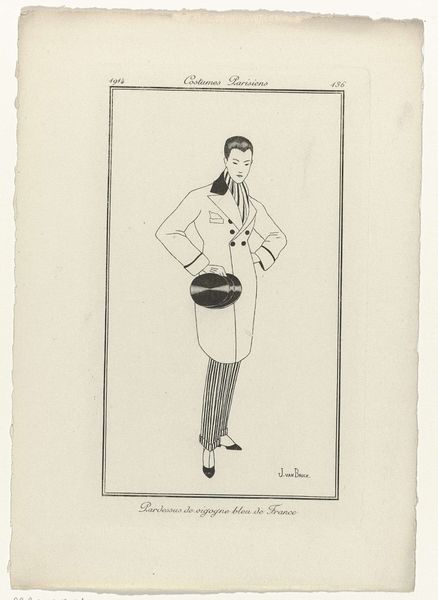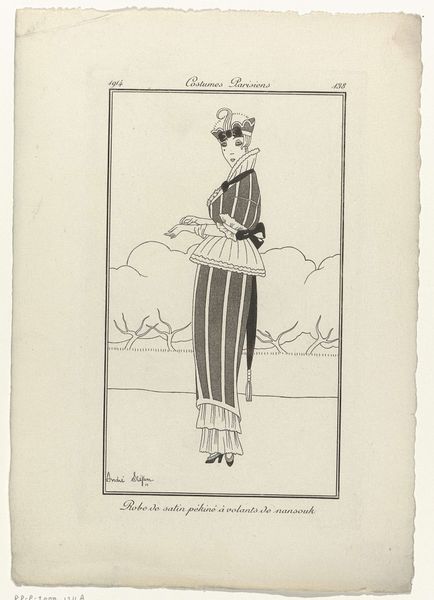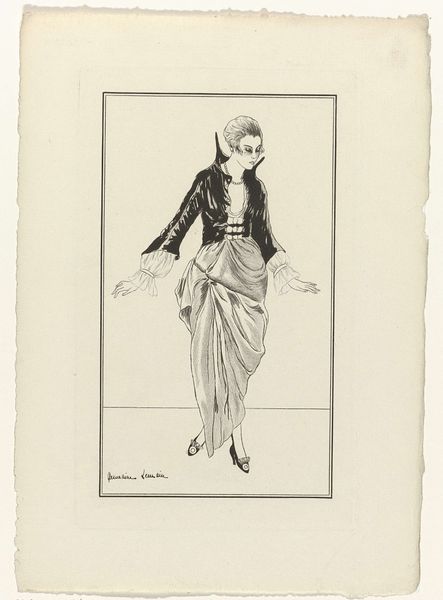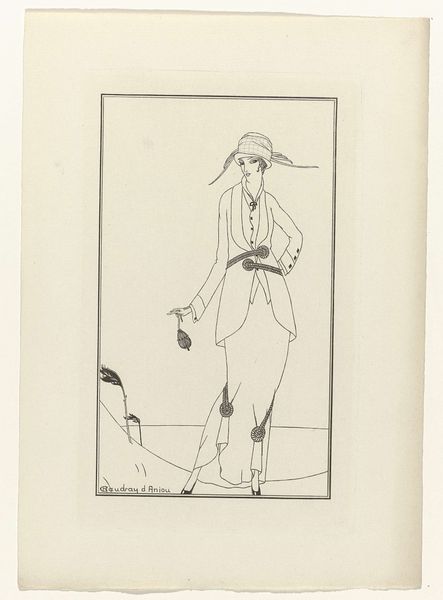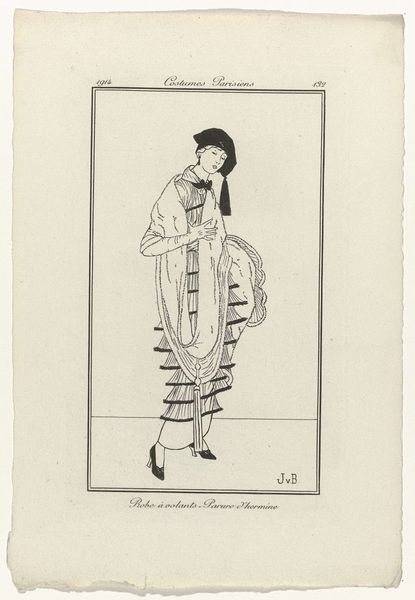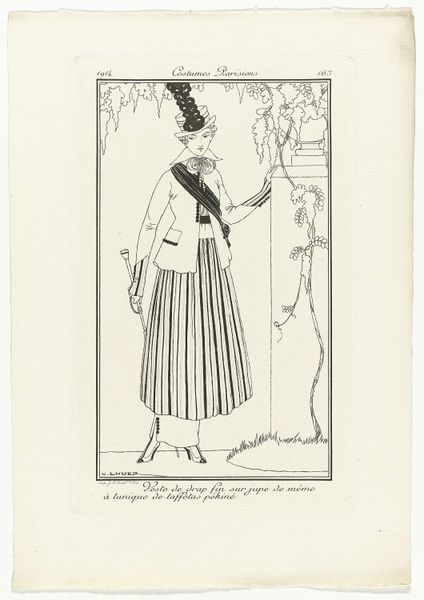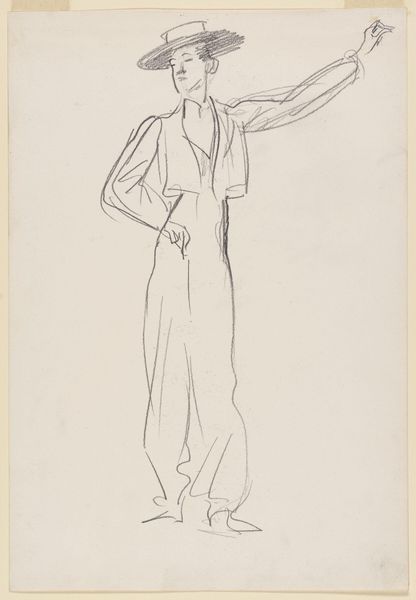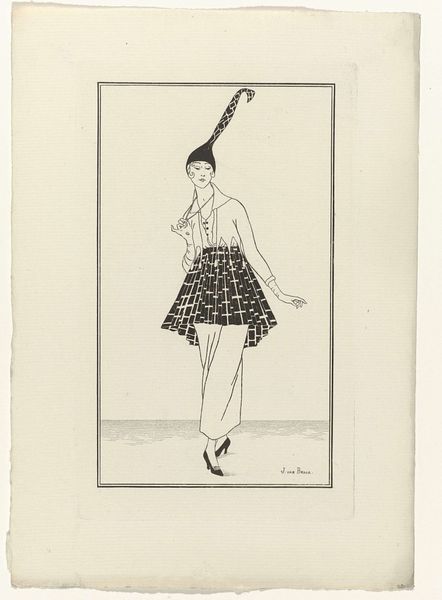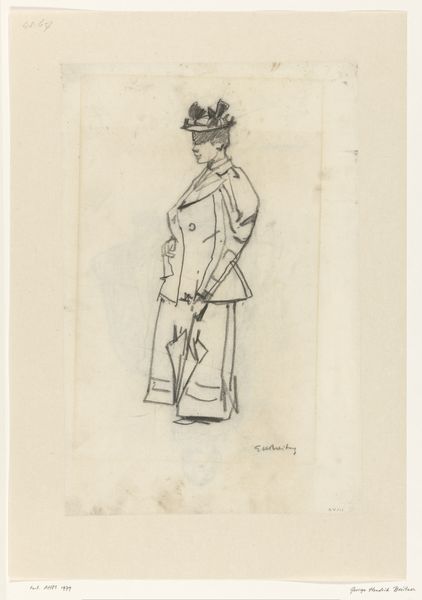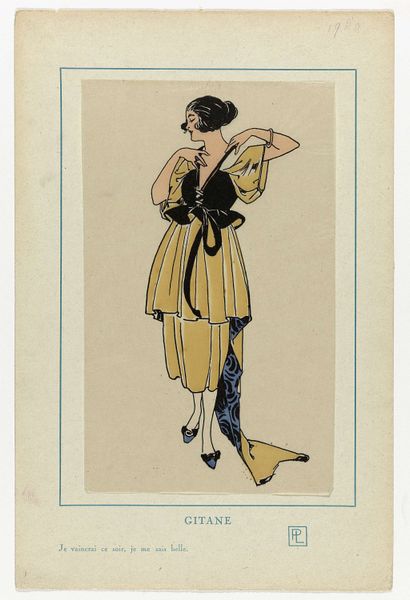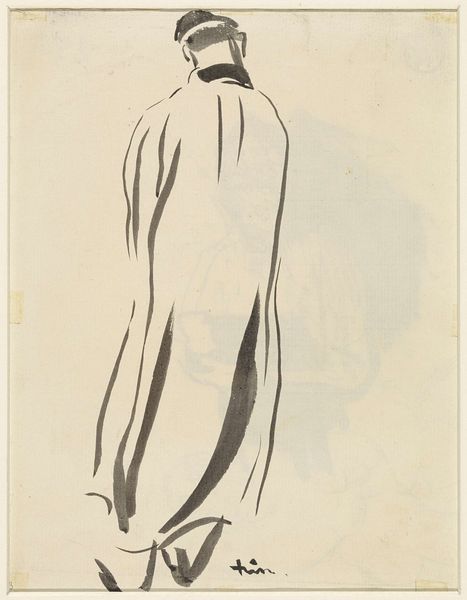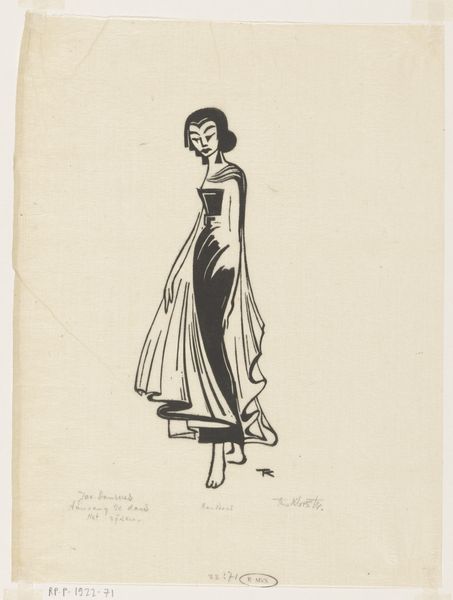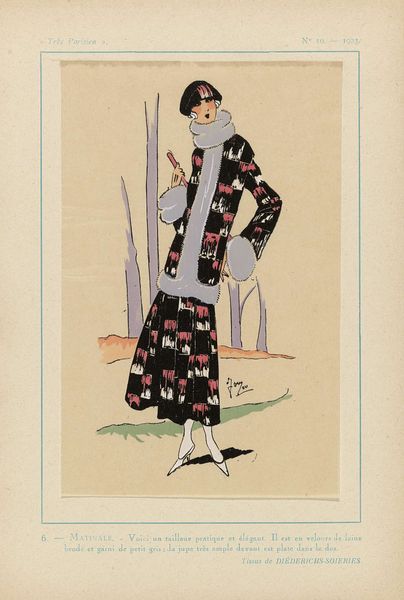
Journal des Dames et des Modes, Costumes Parisiens, 1914, No. 151 : Petit tailleur du matin 1914
0:00
0:00
drawing, print, paper, pen
#
portrait
#
drawing
#
art-nouveau
# print
#
paper
#
pen
#
cityscape
#
genre-painting
Dimensions: height 174 mm, width 108 mm
Copyright: Rijks Museum: Open Domain
Editor: This is "Journal des Dames et des Modes, Costumes Parisiens, 1914, No. 151 : Petit tailleur du matin," a pen drawing and print on paper by Monogrammist BVB. The woman’s posture is quite striking and the detail of the cityscape behind her really sets a scene. What do you see in this piece? Curator: It’s a fascinating artifact of its time. Consider that 1914 wasn't just the height of Art Nouveau, but also the precipice of World War I. These fashion plates weren't simply about clothing; they presented an idealized image of Parisian womanhood at a moment when traditional roles were about to be fundamentally disrupted. This woman embodies confidence and control with the fashion that allows women more practicality during the era, which could be considered an early form of liberation through style. Editor: That’s a compelling point. So it's not just about beauty; it’s also a reflection of the changing social status of women. Does her attire signify this liberation and change, even? Curator: Precisely! And consider the cityscape—a controlled, geometric backdrop to her figure. This speaks volumes about the environment women were beginning to navigate. They were moving into a more defined public space and also taking on new, more modern identities that challenged societal norms. Editor: It’s incredible to think how much social context can be embedded in what seems like a simple fashion plate. This almost romanticizes the power of early femininity and strength in the face of global conflict. Curator: Exactly. It highlights that the personal is political. What she wears, where she stands – it’s all intertwined with the seismic shifts occurring around her and with society at large. It reminds us how everyday artifacts like this hold layers of historical and social significance, inviting us to explore the complex relationships between fashion, identity, and social change. Editor: That’s changed how I view art history. The context truly does matter. Thank you!
Comments
No comments
Be the first to comment and join the conversation on the ultimate creative platform.
